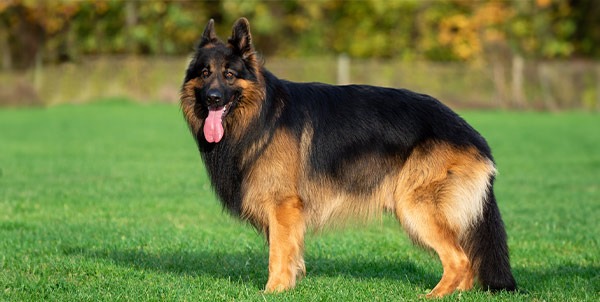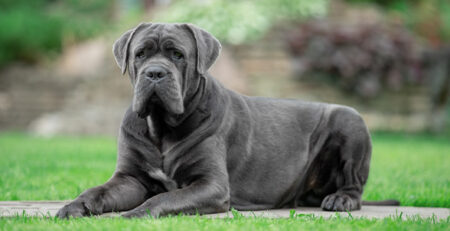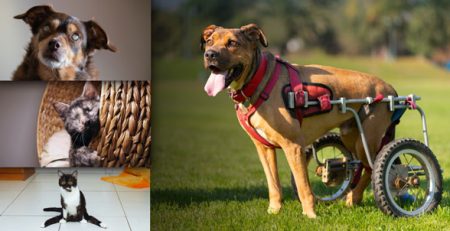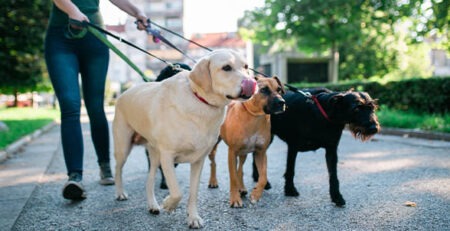The German shepherd: from the origins of the breed to the senseless distortion of its appearance.
The ancestor of the modern-day German shepherd was responsible for the role of conductor, guardian and protector of the highly prized flocks in the German countryside of the 18th century, where animal husbandry and herding were the basis of the economy of farming communities.
The progenitors of the modern German shepherds came mainly from Asia Minor particularly from Serbia and southern Macedonia where, by herding tradition, suitable dogs were bred.
Strains were being crossed with each other without a criterion until Max Von Stephanitz, a Prussian officer, came up with an idea.
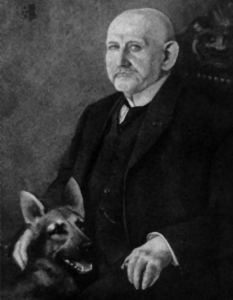
His goal was to create a “unified” dog model that represented the standard of the German shepherd.
In 1899 Von Stephanitz noticed at a dog show a sheepdog named Hektor Linksrhein.
Thunderstruck by the sight of that specimen, believing it to be perfect for obtaining the prototype of the standard, he purchased it and renamed it Grafrath’s Horand.
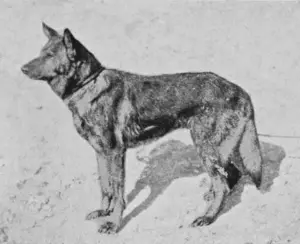
Hektor Linksrhein
The standard of the German Shepherd or German Shepherd Dog
Horand sired as many as one hundred and fifty offspring, and the standard formalized by Von Stephanitz, which covers both physical and temperament and character traits, was later ratified by the German Dog Breeding Society (VDH) in 1901 at the 6th Members’ Meeting.
Von Stephanitz obtained, therefore, his perfect “working dog”: sturdy, strong and muscular, an excellent trotter.
A well-balanced dog, confident, alert and docile, brave and combative, full of life and curious, fearless and efficient, protective and trusting.
However, the German shepherd’s primary function as a herding dog was destined to be exhausted due to the industrialization of the territories and the gradual downsizing of herding.
That is why the German shepherd then began to be used in other areas as well: in the police force, by firefighters or drug squads, in rescue missions or as a guard dog.
American breeders began to distort the appearance of the dog
To mark a marked difference from the standard from which it originated, American breeders have distorted the appearance of the German shepherd.
They gave rise to specimens with stronger bones, forcibly angled rump and increasingly bent hind legs.
The dastardly ambition for a star-spangled standard has produced one unfortunate consequence.
That is, to select specimens predisposed to congenital skeletal disorders such as hip, elbow, and knee dysplasia.
Heavily unbalanced German shepherds with their backsides almost touching the ground satisfy only one need: the selfish and vain human need that has trumped ethics and respect for the animal.
Joint diseases but not only: genetic predispositions of a German shepherd
Musculoskeletal problems aside, a purebred German shepherd is prone to:
-cardiopathy
-epilepsy
-diabetes
-degenerative myelopathy
-gastric torsion
-accumulation oftartar
Genetic and morphological predisposition does not imply that all German shepherds manifest these diseases.
More simply, they are more at risk than other breeds, and therefore, there is a need to implement a preventive health plan for early detection and risk reduction.
The German Shepherd needs a lot of physical activity and badly needs humans with regular routines who devote a lot of time to him and share with him an existence rich in experiences and interactions.
The relationship with the German shepherd
A stimulation-poor existence and loneliness are particularly detrimental to the mental and physical balance of the German shepherd.
The predatory motivation, once used to chase and herd livestock by protecting them from predators, later to defend properties from external threats, must be properly met.
And again, as a good lead shepherd, he has very high collaborative and affiliative motivations so he bonds very much with his family and is always excited to learn and do new things with his humans.
Loneliness and social isolation often have very serious repercussions first and foremost the obsessive compulsive disorder of
tail chasing
that is, obsessive tail chasing to the point of severe self-harm.
Selected to stand by humans and help them, the German shepherd is a wonderful, sensitive and generous dog.
If it is your intention to welcome one into the family, consider whether you are really able to meet its needs.
Kennels and rescues are unfortunately full of misunderstood and frustrated German shepherds.
If you would like further clarification and to best approach your German shepherd, contact us to schedule an appointment with our experienced dog behavior specialists.
We would also like to remind you that Clinica La Veterinaria is always open h24 every day including holidays and with First Aid service from 8 pm to 8 am.

